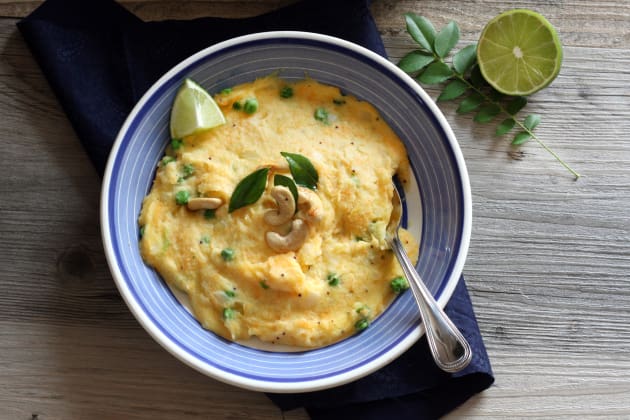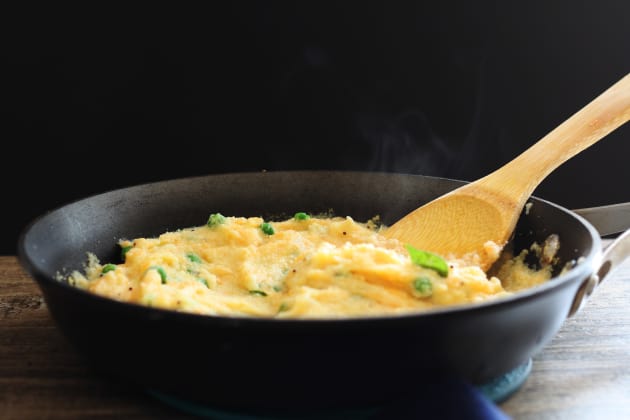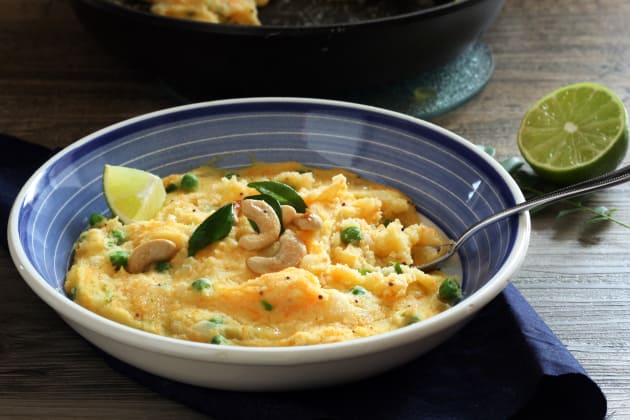What is Semolina?
Cyd ConverseYou may have heard of semolina or seen it listed as an ingredient in recipes - but do you know what it actually is? Discover where semolina comes from and all the different ways it can be used!
The name 'semolina' may sound quite grand, but semolina is actually a type of coarse flour, usually milled from durum wheat.
Note: If you are reading this article from certain parts of Europe, then you may well have a different definition for 'semolina', where the word is used to describe a sweet pudding made with milk and sugar!
The name 'semolina' comes from the Italian word 'semolino' - and it's a type of flour widely used in Italian cuisine.
That's because it's one of the main ingredients in pasta!
Semolina is particuarly high in a protein called 'gluten', which strengthens the pasta and helps it keep its shape once cooked.
Semolina made from durum wheat tends to be almost golden in color - that's why pasta tends to look pale yellow! It also explains why durum wheat is often known as macaroni wheat or pasta wheat.
Semolina isn't just good for pasta - it can be used as a crispy coating, too!
Try sprinkling some on to roasted veggies for a little extra crunch! It can make a great alternative to corn flour to stop foods sticking when baking. And some people like to add a little semolina when baking bread, as it enhances the flavor of the crust.
Another kind of semolina is farina, which is NOT made from durum wheat, but from other varieties. Farina is used in America to make the popular 'Cream of Wheat' breakfast cereal, a creamy dish served with milk.
Another major use for semolina is in the production of cous cous, the popular yellow 'grain' that can be used in amazing recipes like this Black Bean Cous Cous Salad.
Buying and storing semolina
You can find semolina near the flour section of your grocery store. Keep it in the fridge when you get it home, as its high protein content makes it more likely to spoil.
You can freeze semolina too, and there's no need to thaw it before use.
Is it really semolina?
Sometimes other grains - like rice and corn - are milled, and the flour produced is referred to as 'rice semolina' or 'corn semolina'.
It's important to note that these are not true semolina - so if your recipe calls for it, make sure you're buying proper semolina made from durum wheat, and not a rice- or corn-based ingredient instead!
Other names and uses for semolina
Semolina is a widely used ingredient in all sorts of dishes and is known by various names!
In many parts of Europe it's called Grieß, which is a word related to 'grits'. It's used in lots of different ways, including as breakfast (served with raisins) or a dessert (served with chocolate).
In India it's known as sooji or rava, where you can find it used in recipes both savory - like this wonderful Semolina Upma - and sweet. It's often used as a crispy coating for fried fish in Indian cuisine, and is also a main ingredient in the Indian sweet treat 'halwa'.
Semolina is more commonly consumed as cous cous in parts of Africa and it is often served with lunch.
More tasty cous cous recipes:
Cyd is a native of Upstate New York, born to a family of women who love to cook and host parties. She shares her love of all things food, home and entertaining on her blog, The Sweetest Occasion and on Instagram.
Tags: Pasta, Indian, Grains, Couscous, Semolina, British







